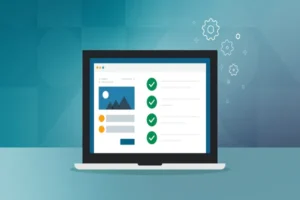Employee Monitoring Software: What It Is and Why It Matters

In today’s increasingly digital and remote-first work environment, employee monitoring software has become a valuable tool for businesses aiming to maintain productivity, ensure accountability, and protect company data. But what exactly does this software do, and how can organizations use it effectively and ethically?
What Is Employee Monitoring Software?
Employee monitoring software is a type of digital tool designed to track and analyze employee activities during work hours. It typically collects data such as time spent on specific tasks, websites visited, applications used, and even keystrokes or screen captures, depending on the level of monitoring implemented.
While this might sound intrusive, the goal isn’t surveillance—it’s about gaining insight into how work is performed, identifying bottlenecks, and supporting team productivity.
Key Features of Employee Monitoring Tools
Modern employee monitoring solutions offer a range of features, including:
- Time Tracking: Automatically logs hours worked, breaks, and time spent on tasks.
- Application & Website Usage: Records which apps and websites are used during work hours, helping identify distractions or inefficiencies.
- Productivity Analysis: Analyzes activity data to provide reports on productive vs. unproductive time.
- Screenshot Capture: Periodically takes screenshots to provide visual records of activity (optional and often customizable).
- Keystroke Logging: Records keyboard input, though this is less common due to privacy concerns.
- Project Tracking: Links time and activity data to specific projects for better resource planning.
Benefits of Employee Monitoring Software
Implementing employee monitoring software can offer several advantages for businesses:
- Improved Productivity: By identifying time-wasting activities, employers can help teams stay focused.
- Transparency and Accountability: Employees become more aware of how they spend their time, promoting responsible work habits.
- Better Remote Management: Managers gain visibility into remote teams without constant check-ins or micromanagement.
- Data-Driven Decisions: Real-time insights into workloads help managers allocate tasks more effectively and avoid burnout.
- Security and Compliance: Monitoring tools help detect suspicious behavior that could lead to data breaches or non-compliance issues.
Potential Challenges and Ethical Considerations
Despite the benefits, employee monitoring must be approached with care. Overly aggressive tracking can damage trust and morale. Here are some challenges to consider:
- Privacy Concerns: Employees may feel their personal space is being invaded, especially if monitoring includes keystrokes or screenshots.
- Legal Compliance: Laws regarding employee surveillance vary by country and region. It’s essential to follow local regulations and inform employees.
- Trust Issues: Excessive monitoring may send a message that management doesn’t trust the team, leading to disengagement.
Best Practices for Ethical Implementation
To strike the right balance between oversight and respect, consider the following best practices:
- Be Transparent: Clearly communicate what will be monitored, how the data will be used, and why it’s necessary.
- Customize Monitoring Levels: Avoid blanket policies. Tailor monitoring based on roles and responsibilities.
- Use Data Responsibly: Focus on performance trends and task management, not micromanaging individuals.
- Obtain Consent: In many jurisdictions, written consent is required. Always make sure employees are aware and have agreed to the monitoring.
- Respect Off-Hours: Monitoring should be limited to work hours and devices, especially in remote and hybrid setups.
Use Case Example: How Monitask Can Help
Monitask is a powerful employee monitoring software designed to help businesses manage remote and hybrid teams effectively. With features like real-time activity tracking, detailed reports, and productivity dashboards, Monitask allows managers to optimize workflows without invasive oversight.
Whether you’re managing a distributed team or simply looking to boost transparency and performance, Monitask can be a valuable tool—especially when used with clear communication and respect for employee privacy.
Conclusion
Employee monitoring software is not just about watching employees—it’s about empowering teams with data, improving performance, and safeguarding company resources. When implemented transparently and ethically, it can be a win-win for both employers and employees.







